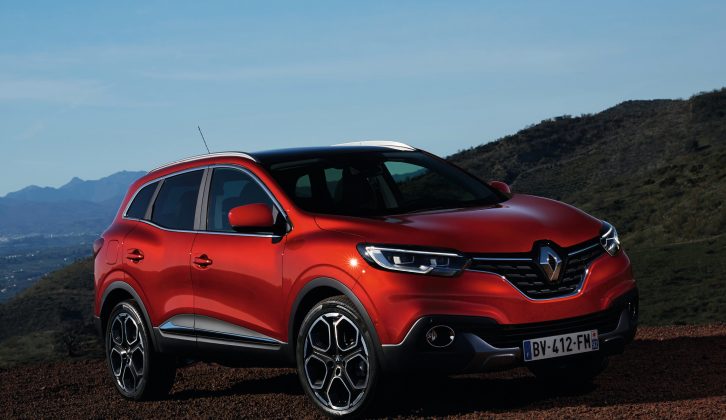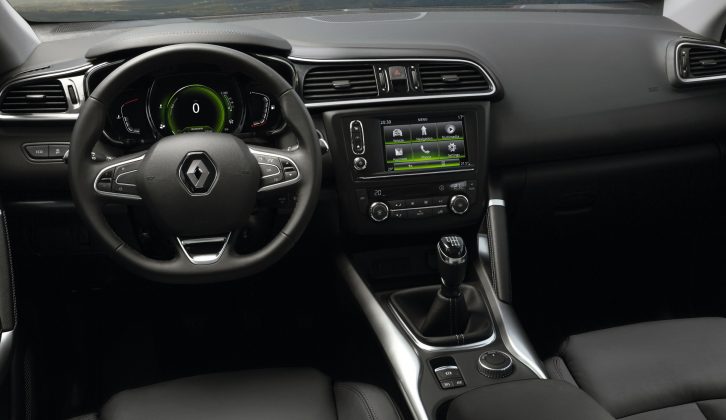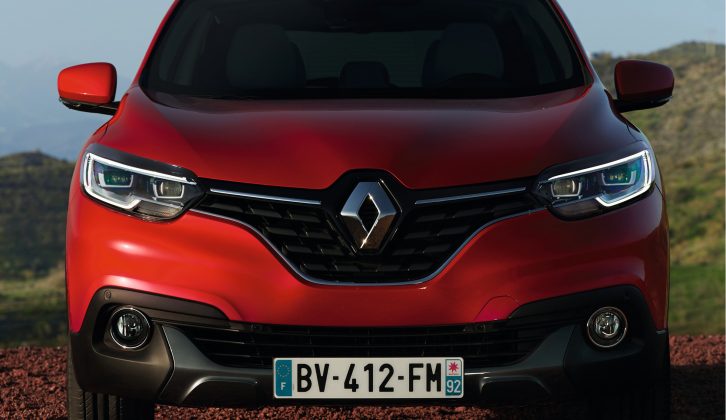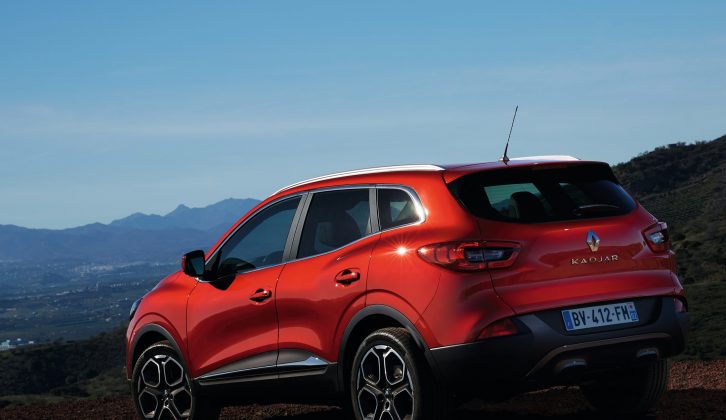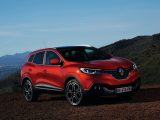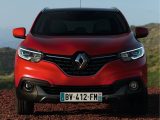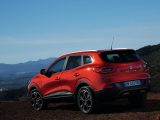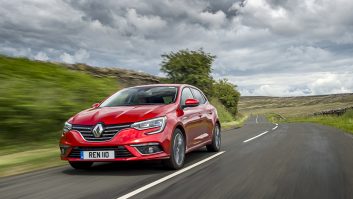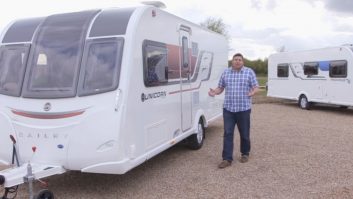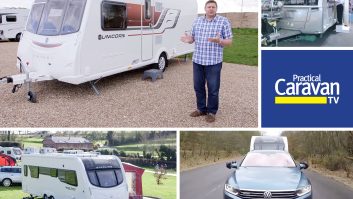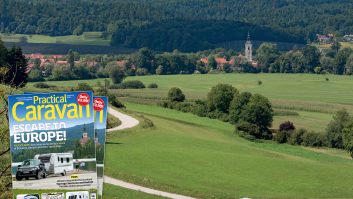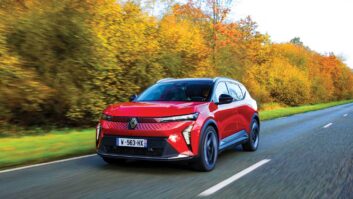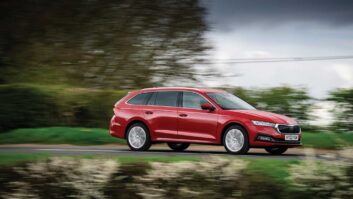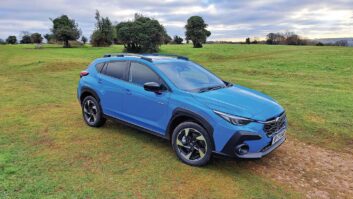As a tow car, the new Renault Kadjar has good genes. It shares some 60% of its parts with the Nissan Qashqai, the Tow Car Awards 2014 overall winner. And its little brother, the Captur, was the best ultra-light tow car the same year.
We haven’t had the chance to tow a caravan with the Kadjar just yet, but the signs are it won’t let its close relations down.
There’s a choice of three engines: one petrol and two diesels. If you’re wondering what tow car to buy next and you are considering a Kadjar, it’s the more powerful diesel which has most potential. Not only does it have more power and torque (with 128bhp and 236lb ft), it’s also the heaviest, with a kerbweight of at least 1415kg, rising to 1536kg for the 4WD version. Whether power goes to two or four wheels, the legal towing limit is 1800kg, and the maximum download on the towball is 75kg.
The 128bhp 1.6 diesel is already familiar from the Qashqai, and it’s no surprise that it performs equally well in the Kadjar. Despite its small capacity the engine pulls cleanly from low revs, and there’s enough brawn in the middle of the rev range for relaxed towing.
It’s not the smoothest or quietest engine we can think of, but there’s enough sound-deadening for its grumbling to sound distant.
The other diesel is a 1.5 with 108bhp and 192lb ft of torque (dropping to 184lb ft on cars with the EDC automatic gearbox). It’s noticeably slower to accelerate than the 1.6, but the trade-off is less noise and better economy. Manual cars achieve 74.3mpg and emit just 99g/km of carbon dioxide if riding on 16- or 17-inch wheels (cars with larger alloys are slightly thirstier). That compares with 65.7mpg and 113g/km for the 1.6 2WD.
If you’re looking at the Kadjar as a second car and have something with more brawn and heft on the driveway for towing duties, then we’d be happy with the 1.5. However, since the 1.5 weighs less, with kerbweights starting from 1380kg and a legal towing limit of 1350kg, we’d choose the heavier and more powerful 1.6 for towing.
There’s also a TCe petrol model, although with 151lb ft of torque it’s likely to prove sluggish when towing. Kerbweights start from 1306kg and the legal towing limit is 1500kg.
Both the diesel cars we drove were high-spec models fitted with 19-inch alloy wheels. These look good but our bet is they contribute to the firm low-speed ride. Things smooth out at speed, but the less expensive trim levels on smaller alloys should ride more comfortably. Hopefully they’ll generate less road noise, too, which was a little too prominent when driving over coarse road surfaces.
Crossovers like the Kadjar are more likely to be used for the school run or commute than a quick blast down a favourite country road, but the Renault handles neatly and resists body roll well. The steering is light but direct, and there’s enough grip and poise for the Kadjar to leave you smiling if you take the long way home.
Inside, the standard of finish is good enough to rival the Qashqai’s, although the design of the interior is clearly unique to the Kadjar – Renault is keen to point out that despite sharing a lot with the Nissan, 95% of the parts you can see or touch are unique to the Kadjar.
There’s plenty of adjustment for the seat and steering wheel, but the thick front pillars do compromise the driver’s view at junctions.
Rear-seat space is generous, with enough room for adults to sit comfortably. However, it’s a shame there are no air vents between the front seats or in the door pillars to blow chilled air at passengers in the back (there are vents under the front seats).
The boot has quite a high floor, but there’s no load lip to load items over. There’s space beneath the floor to hide valuables or to store the luggage cover if you need to load the car to the roofline.
Levers either side of the tailgate lower the back seat and increase the luggage capacity from 472 litres to 1478 litres.
Just to the left of the tailgate is also where you will find the catch that releases the retractable towball. It’s a very neat solution which keeps the back of the car looking as Renault’s designers intended when you’re not towing. It costs £590 including 13-pin electrics, or £795 combined with a towball-mounted carrier for two bikes. That’s not bad value if you enjoy cycling as well as caravanning, although of course you won’t be able to tow a tourer and make use of the bike carrier at the same time.
There are four trim levels, starting with Expression+. Fashion-conscious buyers will be turned off by the 16-inch steel wheels, but otherwise it’s reasonably equipped with manual air conditioning, a DAB digital radio, front and rear electric windows, Bluetooth connectivity and more. Safety kit includes driver, passenger, side and curtain airbags, along with stability control, which will have contributed to the Kadjar’s five-star rating from the crash testers at Euro NCAP.
For another £1700, Dynamique Nav adds 17-inch alloy wheels, roof rails, dual-zone climate control, light-sensitive headlights, rain-sensing wipers, a seven-inch multimedia system and satellite navigation. A further £800 pays for a Dynamique S Nav car, with leather seats, 19-inch alloys and more. Top-spec Signature Nav cars are another £1200 with additional equipment including full LED headlights, a panoramic sunroof and a powerful BOSE stereo.
The Renault Kadjar is a thoroughly likeable car. The ride on 19-inch wheels may be a touch firm but it’s enjoyable to drive, roomy, practical and well equipped. We’ll have to wait a while before we have the chance to hitch a van to the back of one and reveal what tow car ability it truly has, but our solo test drive suggests it’s right up with the Qashqai as one of the best mid-sized crossovers.
There's enough brawn in the middle of the rev range for relaxed towing
